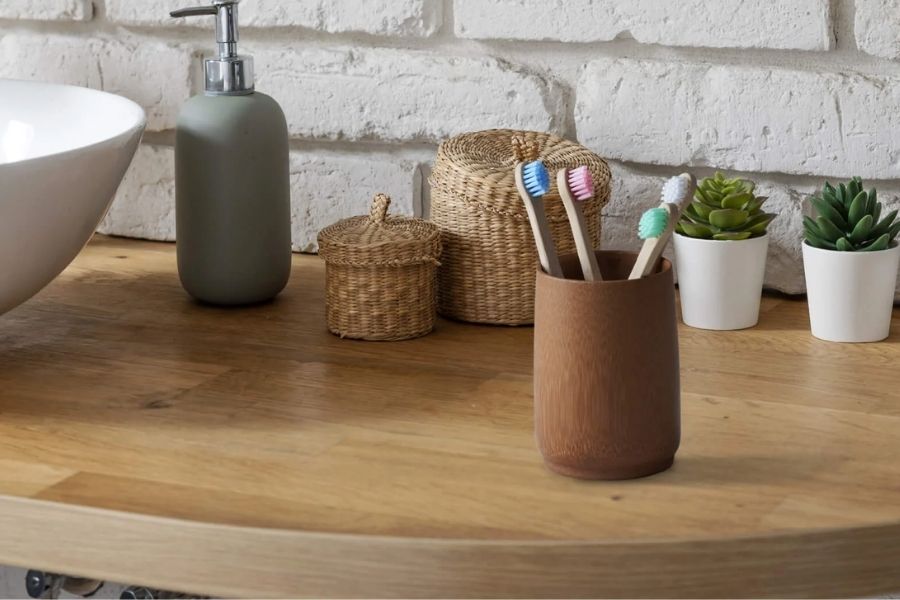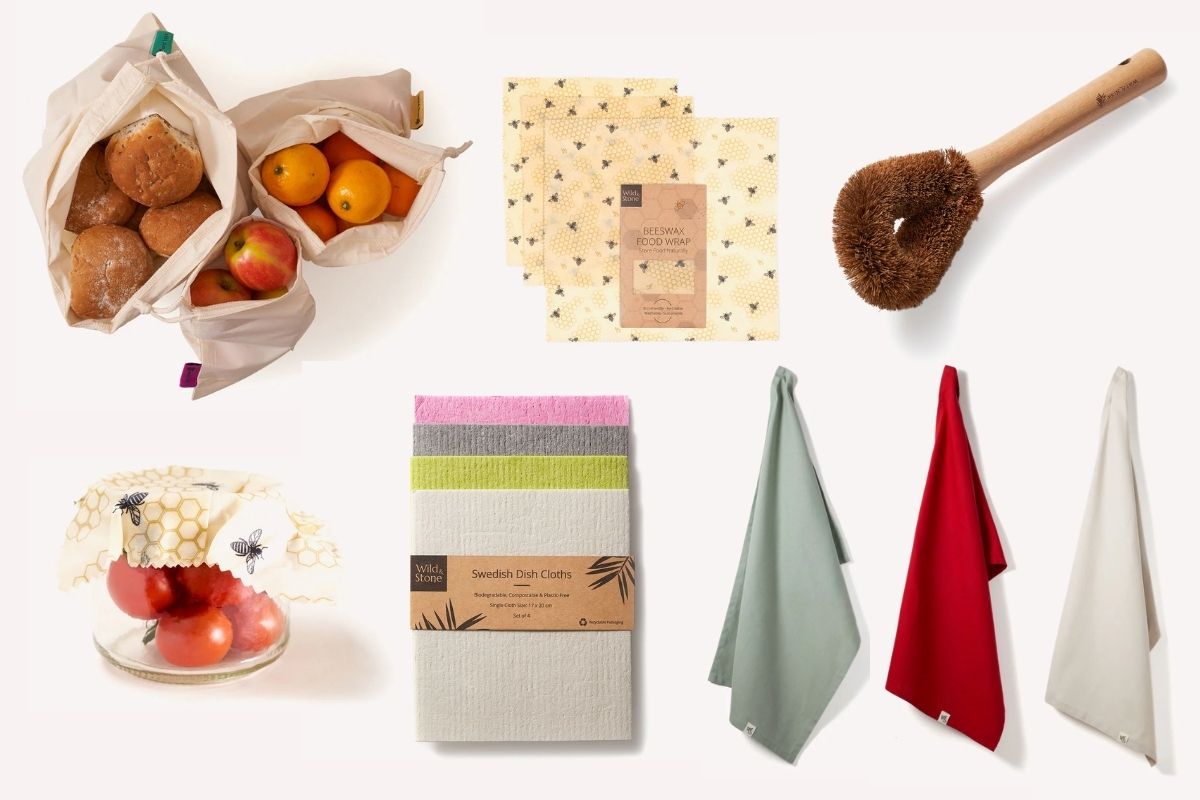Your Cart is Empty
INFO

How To Plant For Bees And Butterflies
July 21, 2022 6 min read
All around the world, insect populations are in significant decline. The dwindling populations of pollinating insects are of particular concern, as they are essential for so many aspects of life, including food production, human health, and the very functioning of the ecosystem.
Here in the UK, our bees, butterflies and hoverflies have suffered badly over the last fifty or so years due to changes in land usage caused by modern farming methods, urban expansion, and new transportation links. Since the 1930s, almost 97% of the flower-rich grasslands in England (an area the size of Wales) have been lost, lowering pollen and nectar sources and leading to a significant reduction in any wildlife that relies on wildflower-rich habitats, including our vital pollinators. This reduction is reflected all over Britain, and the pattern of loss continues.
A simple way to help stop this shocking decline and to support your local pollinators is by choosing to fill your garden, whether a large back garden, a tiny patch, a sunny border or just a window box, with flowering plants full of nectar and pollen, to feed the bees, butterflies and other pollinating insects.
In this blog, we will tell you all about the flowers and plants that bees love, not forgetting that bees are only one of our more commonly-known pollinators, but there is a range of species which can act as pollinators, including butterflies, moths, wasps, beetles, and flies.
Best Plants For Bees

Bees need three things to thrive: food, shelter, and water. With some planning around the seasons, you can help our vital pollinators by growing plants that flower from spring through to winter, giving them access to food for as much of the year as possible.
Flowers developed 300 million years ago to attract insects, so you might imagine that all flowers are beneficial to insects, but this is not the case.
Breeders have tinkered with flowers for many years, selecting double variants, larger blooms, odd colours, etc. They've frequently generated flowers that have lost their original purpose. Most annual bedding plants, including busy lizzies, begonias, pansies, petunias, and pelargoniums, are useless for insects. Be aware that many plants are also sold with pesticide residues.
So, what are the best flowers for bees and all the other pollinators?
Best Flowers For Bees

Start by choosing single, open flowers where you can see the central part of the flower, where the bees can easily access the nectar and pollen; these are often the most bee-friendly plants.
Bees can see the colour purple more clearly than any other colour, and some of the best bee plants, such as lavender, alliums, buddleia and catmint, have purple flowers.
Tubular-shaped flowers such as foxgloves, honeysuckle, penstemons and snapdragons are an essential source of food for long-tongued bees such as the garden bumblebee.
To feed and support the bees who may emerge early from winter hibernation, aim to have at least two nectar or pollen-rich plants that will flower during the winter. Choose plants like winter honeysuckle and winter clematis, which are perfect for the job.
Think about sourcing and growing native plants in your area. Our native flowers have evolved alongside our native insects, and some rarer species of pollinators tend to favour native wildflowers. There are other benefits to wildflowers, too - they can be easy to grow and maintain and are usually relatively resistant to pests. Some native flowers you could consider include common poppy, evergreen clematis, teasel, and comfrey.
Planting trees and shrubs is also great for bees as they provide so many flowers in one place. Choose winter and early spring flowering trees such as apple, wild cherry, willow and hazel and try to source local or native varieties.
Consider planting bee-friendly herbs too. Herbs that flower at different times of the year are excellent for different bee species. Marjoram is perfect for spring - attracting bumblebees, honey bees, and solitary bees like leafcutter bees and furrow bees. Chives are great for summer - their bunched purple florets are best left for mason bees, amongst others, seeking the nectar. Sage is a herb for autumn, offering spikes of tubular flowers. Finally, Rosemary can be harvested year-round for the fresh needles. It also has a long flowering season, with the flared blue flowers often attracting mason bees, flower bees, bumblebees and honeybees.
Don’t forget, one of the best things you can do for bees and all pollinators is to leave a patch of the wildflowers we have decided to call weeds for them. Bees adore clovers, and daisies and dandelions offer nectar to bees for a more extended period of time than a lot of our cultivated flowers.
Creating A Nectar And Pollen ‘Cafe’ For Butterflies

We love the idea of setting up a nectar ‘cafe’ in your garden, benefitting both your plants and you, allowing you to enjoy the flitting and fluttering of beautiful butterflies.
Butterflies are another key pollinator that we should be actively thinking about supporting and bringing to our gardens. Did you know there are approximately 60 species of British butterflies that grace our shores annually, including regular migrants from other countries? However, many of our most loved British butterfly species are at risk of extinction, so planting butterfly-friendly blooms in our gardens can help them survive and thrive.
Setting up an attractive spot full of pollen-rich flowers and herbs in your garden will create the perfect environment for butterflies, providing food and shelter for them.
Here are the key stages to building an oasis for butterflies:
- Find a sheltered yet sunny area - not too exposed to full sun; a garden border along a fence or a wall would work well.
- Plant flowers in groups, close together so that our pollinators can easily detect the colours and scents.
- As with planting bee-friendly flowers, make sure you choose flowers with a simple, flat structure, like old cottage garden varieties, as they are the easiest for insects to feed on. Buddleia, verbena, lavender, wallflower and marjoram are all perfect plants to provide summer nectar to our butterfly friends.
- Select plants that bloom at different times, from early spring to late autumn.
- Mix in some herbs, maybe even create a herb garden.
- Don’t forget the moths! Maybe plant some night-scented flowers like honeysuckle, buddleia, common jasmine, evening primrose or hebe.
Helping The Next Generation Of Butterflies

Allowing butterflies to breed in your garden is a good way to help them - one many people don’t think of.
They can only lay eggs of the next generation if they have the necessary foodplants, so the more we provide for them, the more butterflies there will be.
Caterpillars of butterflies are picky eaters. They lay eggs on one or two plants, knowing their caterpillars will need them to live when they hatch. We can only increase the number of adult butterflies by growing the correct plants.
You can support local butterflies, too, by planting the exact variety needed by those native to your area.
Once you find out which species live locally, you can check what each butterfly wants to lay its eggs on. You may already have their caterpillar's food plant in your garden, or you can find out if you have a space to grow it.
Some of our most common butterfly species’ caterpillars eat nettles. Red admiral, peacock, small tortoiseshell and comma caterpillars are all nettle eaters. Most of us don’t want nettles in our garden, but just allowing a small patch of them will massively help these types of butterflies survive and flourish.
Gatekeepers, meadow browns and skippers like to eat wild grasses left to grow tall, so again, allowing a part of your garden to go wild is a big plus for these vital pollinators.
Consider Where You Buy Your Bee-Friendly Plants

The goal of a pollinator garden is to provide bees and butterflies with plenty of tasty, healthy food. Isn't it the last thing you want to do is give them plants that contain horrible artificial chemicals?
We recommend you seek out a local grower to buy your bee-friendly plants rather than a big box store. You can check that your plants are grown naturally and organically, not with synthetic fertilisers, and not covered in pesticides.
When you buy plants that have been grown locally, they are much more likely to thrive in your garden, not to mention your purchase supports small and local businesses. You will also likely find more local plants by shopping at local nurseries, which your native pollinators will love.
The same goes for if you decide to grow from seed, go for organic and use natural soil. Focus on locally-sourced seeds if that’s possible for you. Remember to avoid using soil containing peat to help keep our threatened peat bogs intact.
Remember It’s Not Only About Bees And Butterflies

All insects are crucial to our ecosystem. Insects such as hoverflies, beetles and ladybirds hunt aphids and other pests—so treat them as allies, not enemies. We can have beautiful gardens full of gorgeous trees, flowers, herbs and veggies and help bees and other nature at the same time.
Letting bees guide what you choose to plant and how you treat your garden helps transform your patch, control pests naturally and get your plants and crops pollinated for free. Sounds like more than a fair trade.
-
Wild & Stone's mission is to create stylish, easy to adopt and usable alternatives to common plastic products around the home. We source all our products sustainably, from raw material to final delivery. Shop our wide range today.
Also in Sustainable Living Blog

The 5 Benefits of Using a Bamboo Toothbrush
August 07, 2025 4 min read
Discover five benefits of using a bamboo toothbrush, from saving the planet and oral health to the fastest plant in the world.

The 5 Best Eco-Friendly Kitchen Products
July 30, 2025 4 min read
Discover the 5 best eco-friendly kitchen products to take care of yourself, your home & the environment.
Make your inbox a little more eco!
Sign up and save 10% on your first order of 2 items or more.
Keep an eye on your inbox for the latest eco trends, articles, deals and product releases.



